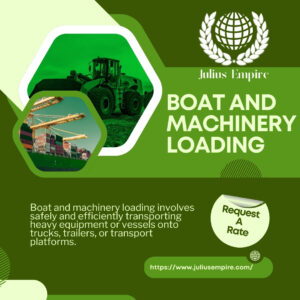
As we navigate an era marked by rapid technological advancement, the landscape of employment is evolving at an unprecedented pace. From artificial intelligence (AI) to blockchain, the skills demanded in the job market are continuously changing, compelling educational institutions to rethink how they prepare students for future careers. This blog delves into the strategies for future-proofing education and ensuring students are well-equipped to thrive in a tech-driven job market.
Understanding the Tech-Driven Job Market
The job market of today is vastly different from that of a decade ago. Industries are increasingly reliant on technology, making digital literacy a crucial skill. According to the World Economic Forum, it’s estimated that by 2025, 85 million jobs may be displaced due to the shift in labor between humans and machines, while 97 million new roles could emerge that are more adapted to the new division of labor.
This transformation calls for a workforce that is not only technically proficient but also adaptable, creative, and resilient. The question arises: how can education systems rise to the challenge and prepare students for this evolving landscape?
Emphasizing Lifelong Learning
One of the most significant shifts in preparing students for a tech-driven future is instilling the value of lifelong learning. In a world where technology is constantly evolving, the ability to learn new skills will be more critical than ever. Educational institutions should focus on fostering a growth mindset, encouraging students to embrace challenges, learn from failures, and view learning as a continuous journey.
Strategies for Lifelong Learning
- Flexible Learning Pathways: Implementing flexible curricula that allow students to explore diverse subjects and skills encourages a broader understanding and adaptability. This could involve project-based learning, interdisciplinary courses, and opportunities for self-directed projects.
- Micro-Credentials and Certifications: Institutions should offer shorter, focused courses that allow students to gain specific skills quickly. Micro-credentials and industry-recognized certifications can help learners remain competitive and relevant.
- Workshops and Bootcamps: Regularly scheduled workshops or boot camps focused on emerging technologies can keep both students and educators up-to-date with the latest trends and skills.
Integrating Technology in the Classroom
To prepare students for a tech-driven job market, integrating technology into the educational experience is paramount. This doesn’t mean merely using digital tools but embedding technology into the very fabric of learning.
Approaches to Technology Integration
- Blended Learning Models: Combining traditional classroom instruction with online learning creates a flexible environment where students can learn at their own pace. This model promotes self-regulation and allows for personalized learning experiences.
- Project-Based Learning: Incorporating technology into project-based learning encourages students to collaborate and apply their skills in real-world scenarios. This method fosters critical thinking, creativity, and problem-solving abilities—skills highly valued in the job market.
- Interactive Tools and Platforms: Utilizing platforms like virtual simulations, coding environments, interactive content tools like Quiz Maker, and online collaboration tools can enhance engagement and provide hands-on experience with technologies relevant to future careers.
Fostering Soft Skills
While technical skills are essential, soft skills—such as communication, teamwork, critical thinking, and emotional intelligence—are increasingly important in the workplace. Preparing students to excel in these areas can significantly enhance their employability.
Developing Soft Skills in Education
- Team-Based Projects: Encouraging students to work in teams helps them develop collaboration and communication skills. These projects can also expose students to diverse perspectives, enhancing their ability to work in varied environments.
- Public Speaking Opportunities: Incorporating presentations, debates, and discussions into the curriculum helps students build confidence in their communication abilities, which is crucial in any job.
- Emotional Intelligence Training: Teaching students to recognize and manage their emotions and those of others can improve interpersonal skills. This could be integrated into the curriculum through social-emotional learning programs.
Collaboration with Industry
Bridging the gap between education and industry is vital for future-proofing students’ skills. Collaboration with businesses can provide insights into the skills currently in demand and help shape curricula that align with industry needs.
Industry Partnerships
- Internships and Co-op Programs: Providing students with opportunities to gain hands-on experience through internships or co-op programs allows them to apply their knowledge in real-world settings. These experiences can be invaluable in understanding workplace dynamics and expectations.
- Guest Lectures and Workshops: Inviting industry professionals to conduct workshops or lectures can expose students to current trends and practices in their fields of interest. This direct interaction can also help build networks that may be beneficial in the future.
- Curriculum Co-Development: Educational institutions should collaborate with companies to co-develop curricula that meet industry standards. This ensures that students learn relevant skills and knowledge directly applicable to their future careers.
Embracing Diversity and Inclusion
In a global job market, embracing diversity and inclusion is essential for fostering creativity and innovation. Education systems should aim to create environments where all students feel valued and are given equal opportunities to succeed.
Strategies for Inclusivity
- Diverse Curriculum: Incorporating diverse perspectives and content into the curriculum can enrich students’ understanding and appreciation of different cultures and ideas.
- Support Systems: Providing resources and support for underrepresented groups can help ensure that all students have access to the same opportunities and resources.
- Global Collaboration: Encouraging collaborations with students from different countries or cultures can enhance global awareness and prepare students for a multicultural workplace.
Conclusion: A Call to Action
As we look toward the future, it’s clear that preparing students for a tech-driven job market is a multifaceted challenge that requires a proactive approach from educators, administrators, and policymakers. By emphasizing lifelong learning, integrating technology in the classroom, fostering soft skills, collaborating with industry, and embracing diversity, we can create a robust educational framework that equips students to navigate the complexities of the future workplace.
The responsibility lies not only in preparing students for their first job but in instilling a mindset that values continuous learning and adaptability throughout their careers. As we embark on this journey, let’s commit to shaping an educational landscape that truly prepares our students for the exciting challenges and opportunities that lie ahead.




